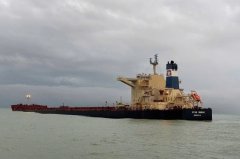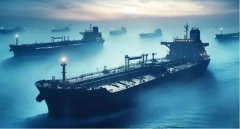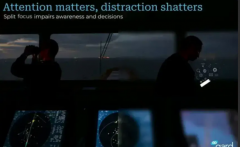
According to new data from Clarksons Research, the size of the global shadow fleet continues to grow as Western nations intensify their waves of sanctions. Most notably, roughly one-third of the world’s Aframax tankers have now been added to sanction blacklists.
Clarksons reports that, as of today, Western countries—mainly the EU and the UK—have added nearly 500 more tankers to their sanction lists this year, bringing the total number of blacklisted tankers worldwide to 908 vessels, or about 16% of the global tanker fleet. Among them, the Aframax segment has been hit hardest, with about 33% of its capacity now sanctioned. By comparison, VLCCs (Very Large Crude Carriers) and Suezmaxes account for 16%, largely because VLCCs are too large to enter Russian ports.
New Sanctions on Russian Oil Majors May Have Broader Impact
Analysts note that the latest U.S. sanctions targeting Russia’s two major oil companies (Lukoil and Rosneft) could have an even deeper and longer-lasting impact than the tanker sanctions themselves.
In its October Sanctioned Fleet Monthly Report, Clarksons Research highlights that major Indian refiners plan to reduce purchases of Russian crude, and some Chinese state-owned oil firms may take similar action. If India and China shift to non-sanctioned sources to replace Russian oil, conventional tanker demand will rise and tighten available tonnage.
Following the U.S. announcement, Indian refiners reportedly moved swiftly to buy more Middle Eastern crude to replace Russian supplies. Meanwhile, law firms have received a surge of corporate inquiries seeking clarification on how the new sanctions will affect compliance and trading contracts.
Malin Hogberg, a sanctions expert at the Swedish law firm WERKS, said that Washington’s new measures “may carry greater weight than the EU and UK’s previous decision to lower the Russian oil price cap,” arguing that direct financial restrictions on oil giants could be far more damaging than price limits alone.
EU and UK Lead the Charge — Tankers Hit Hardest
Since the start of the year, the EU and UK have been the most aggressive in sanctioning tankers. In July, both unilaterally lowered the crude-oil price cap to below USD 60 per barrel, further squeezing Russia’s export capacity, while the U.S. maintained its previous threshold.
Clarksons data show that tankers now account for roughly half of all sanctioned vessels globally, across U.S., EU, UK, and UN lists. The average age of sanctioned tankers is 21 years, compared with 14 years for the mainstream fleet—highlighting how these aging “shadow ships” have become essential to Russia’s export system.
As Russian oil-trade routes grow increasingly constrained, the Aframax market structure is shifting rapidly. Experts predict that if Indian and Chinese imports pivot toward Middle Eastern or African suppliers, tanker freight rates could rise in the short term, though the long-term outlook will depend on geopolitical developments and the persistence of sanction policies.
by Xinde Marine News
The opinions expressed herein are the author's and not necessarily those of The Xinde Marine News.
Please Contact Us at:
media@xindemarine.com

 178,000-DWT Capesize “Star Bueno” Flooded After
178,000-DWT Capesize “Star Bueno” Flooded After  908 Tankers Sanctioned: One-Third of Aframax Fleet
908 Tankers Sanctioned: One-Third of Aframax Fleet  Xinhua: China and the United States Reach Consensus
Xinhua: China and the United States Reach Consensus  Breaking: Sanctioned Russian Tanker Grounds in Suez
Breaking: Sanctioned Russian Tanker Grounds in Suez  Attention Distraction: A Major Threat to Maritime S
Attention Distraction: A Major Threat to Maritime S  U.S.-China Port-Fee Clash Sparks Boardroom Upheaval
U.S.-China Port-Fee Clash Sparks Boardroom Upheaval